| 20 January |
• yesterday • tomorrow |
| Optional Memorial of Pope Saint Fabian, Martyr; Optional Memorial of Saint Sebastian, Martyr |
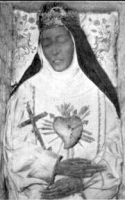
• Eustochia Calafato de Messina
• Eustochia Montevergine
• Eustochia of Messina
• Eustochium Calafato
• Smerelda Colonna
Daughter of Count Bernardo and Countess Macaldo Romano Colonna, Sicilian nobles and wealthy merchants. Legend says she was born in a stable because her mother had received a vision directing her there. Raised and educated by her pious mother, the girl felt drawn to the religious life from an early age.
Eustochia received a her own vision, the image of Christ Crucified. The experience led her to join the Poor Clare Convent of Santa Maria di Basico against the wishes of the rest of her family. Her brothers threatened to burn down the convent, and Smerelda returned home. However, seeing the girl's true devotion and desire they relented, and she returned to the convent, taking her vows and the name Eustochia.
Noted for her self-imposed penances and austerities. Believing her convent locked sufficient discipline, she joined the reform-minded Poor Clare community at Santa Maria Acommodata in 1457, a community whose discipline was so severe that local Franciscan priests refused to say Mass there, fearing they were encouraging impious excesses. She was soon joined there by a blood sister and a niece. In 1463 the group relocated to Monte delle Vergini (Maiden's Hill).
Elected abbess in 1464. Noted for her devotion to the Blessed Sacrament and to the poor of the area. The local lay people considered her their patron and protector, the cloister a place of refuge, especially during the earthquakes that rocked the area.
25 March (Good Friday) 1434 at Annunziata, Messina, Italy as Smerelda Colonna
• 20 January 1491 at Messina, Sicily, Italy
• entombed in the apse of the Sanctuary of Montevergine, Messina, Sicily, Italy
• body incorrupt
11 June 1988 by Pope John Paul II at Messina, Sicily, Italy
Messina, Sicily, Italy
• Poor Clare nun holding a cross
• Poor Clare nun kneeling before the Blessed Sacrament
Learning assiduously in the school of Christ Crucified, she grew in knowledge of him and, meditating on the splendid mysteries of grace, she conceived a faithful love for him. For our saint, the cloistered life was not a mere flight from the world in order to take refuge in God. Through the severe criticism which she imposed upon herself, she certainly wanted to be united to Christ, gradually eliminating whatever in her, as in every human person, was fallen; at the same time, she felt united to all. From her cell in the monastery of Montevergine she extended her prayer and the value of her penances to the whole world. In such a way she wanted to be near to each brother and sister, alleviate every suffering, ask pardon for the sins of all. - Pope John Paul II in his homily at the canonization of Saint Eustochia
https://catholicsaints.info/saint-eustochia-calafato/

• Ursula of Leutkirch
• Ursula of Villingen
Orphaned soon after her birth, Usula was raised by her maternal grandmother and her uncle, Father Johannes Bör. In 1422, at age 9, she moved to the Franciscan monastery of Reute at Bad Waldsee in modern Germany to attend their school. She made her first Communion there, and became the spiritual student of Blessed Elisabeth Achler. Her life at Reute led her to be drawn to the religious life. Returning home at age 17, she received, and turned down a series of marriage proposals, and spent her time searching for the proper monastery to enter religious life. On 29 July 1431 she entered the Poor Clare convent of Valduna, Vorarlberg (in modern Austria). There she cared for the sick, especially cancer patients. Chosen abbess at Valduna in 1449.
In 1465 Mother Ursula heard a voice that prophesied that she would die in Villingen, a place she’d never heard of before. On 25 January 1480, she received an order from Pope Pius VI to go to the Black Forest village of Villingen (in modern Baden-Württemberg, Germany) to take over and reform the Poor Clare monastery there. On 18 April 1480, she and seven of her Franciscan sisters set out for the new town, and on 29 April 1480 they took over the monastery of Saint Klara. The new house was set up under the strictest form of Poor Clare discipline, and six of the sisters returned to their home convent within the first three months, but under Mother Ursula’s leadership, the house flourished, attracting many young pious women, large endowments, and developing a reputation for its piety, choral prayer, quality needle work, herbal medicines and baked goods. During a monstrous storm, her praying of the Psalms and willingness to give herself in place of the townspeople led to a vision of Mary and the Infant Jesus, placing the town of Villingen under the protection of the Blessed Virgin Mary, which saved it from the storm, and explains why the town has never been overrun in the wars that have plagued the region for centuries; the Pslams were prayed at the cloister every Lent as a commemoration of this blessing.
In 1489, ill health forced Mother Ursula to resign the abbacy, and she spent her final years as a prayerful sister, often in and out of hospital. She kept a written record of her life, visions and insights into the faith, but it has been lost.
1413 in Leutkirch, Allgäu, Swabia (in modern Baden-Württemberg, Germany)
• 20 January 1498 in Villingen (in modern Baden-Württemberg, Germany) of natural causes
• interred in the church of the Bicken monastery in Villingen
• re-interred beside the altar in the same church in 1701 after the church underwent remodeling
https://catholicsaints.info/blessed-ursula-haider/
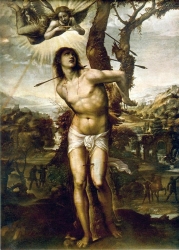
Son of a wealthy Roman family. Educated in Milan. Officer of the Imperial Roman army, and captain of the guard. Favorite of Diocletian. During Diocletian's persecution of the Christians, Sebastian visited them in prison, bringing supplies and comfort. Reported to have healed the wife of a brother soldier by making the Sign of the Cross over her. Converted soldiers and a governor to Christianity.
Charged as a Christian, Sebastian was tied to a tree, shot with arrows, and left for dead. He survived, and with the help of Saint Irene, recovered, and returned to preach to Diocletian. The emperor then had him beaten to death.
During the 14th century, the seemingly random nature of infection with the Black Death caused people to liken the plague to their villages being shot by an army of nature's archers. In desperation, they prayed for the intercession of a saint associated with archers, and Saint Sebastian became associated with the plague.
at Narbonne, Gaul (part of modern France)
shot with arrows c.288 at Rome, Italy
• against cattle disease
• against plague
• diseased cattle
• dying people
• plague victims
• against enemies of religion
• archers
• armourers
• arrowsmiths
• athletes
• bookbinders
• fletchers
• gardeners
• gunsmiths
• hardware stores
• ironmongers
• lace makers
• lace workers
• lead workers
• masons
• police officers
• racquet makers
• soldiers
• stone masons
• stonecutters
• Pontifical Swiss Guards
• World Youth Day 2013
• Bacolod, Philippines, diocese of
• Tarlac, Philippines, diocese of
• 22 cities
• arrows
• crown
• naked youth tied to a tree and shot with arrows
O God, who did bestow on blessed Sebastian, your martyr, such wonderful strength of valour in his sufferings for You: grant us, after his example, to condemn, for love of You, all earthly prosperity, and to dread no sort of adversity. - Gregorian Sacramentary
https://catholicsaints.info/saint-sebastian/
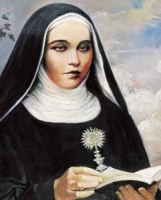
• Adelaide Brando
• Adelaidis Brando
• Maria Cristina Brando
• Maria Cristina of the Immaculata
• Maria Christina ab Immaculata Conceptione
• Sister Maria Cristina of the Immaculate Conception
Born to a wealthy family, the daughter of Giovanni Giuseppe and Maria Concetta Marrazzo; her mother died with Adelaide was only a few days old. The girl was educated at home, felt an early call to religious life, and attended Mass daily. At age twelve she took a personal vow of chastity, and soon after tried to enter the monastery of the Sacramentine Nuns in Naples, Italy, but was stopped by her father. She eventually gained his approval to enter the Poor Clare monastery at Fiorentine, Italy but twice fell severely ill, and had to return home. Upon her recovery she returned to Naples, Italy, and joined the Sacramentine Nuns as she had wanted originally, making her vows in 1876, and taking the name Sister Maria Cristina of the Immaculate Conception. Her health broke again, and she was forced to return home.
Seeing the constant failure as a sign, while renting a room with the Teresiane Sisters of Torre del Greco in 1878 she founded the group that would become the Congregation of the Sisters, Expiatory Victims of Jesus in the Blessed Sacrament, which returned papal approval on 20 July 1903. Though they had money trouble, and Maria's health continued to suffer, the Congregation grew quickly, received help from Venerable Michelangelo of Marigliano and Blessed Ludovico of Casoria, and settled in Casoria where Maria served as superior general of the Congregation. Noted for her strong prayer life, devotion to the birth and Passion of Christ, and the Eucharist, she slept every night in a chair in a small grotto where she could rest near the exposed Host.
1 May 1856 in Naples, Italy as Adelaide Brando
20 January 1906 in Casoria, Naples, Italy of natural causes
17 May 2015 by Pope Francis
Love of God and of neighbour are two branches that are connected to the same trunk. The love of God gives life to the love of neighbour; and this, in turn, nourishes love towards God. - Blessed Maria Cristina
https://catholicsaints.info/saint-maria-cristina-dellimmacolata-concezione/
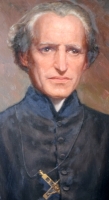
Ninth of fourteen children born to a poor but pious family during the French Revolution. His parents were involved in the Catholic underground during the anti-religious Revolution. Basil was educated by his priest. He entered the diocesan seminary in 1814, a school run by Sulpicians, which greatly influenced his spirituality. Ordained at the Old Visitation Convent Chapel of the Sacred Heart in Le Mans, France in 1821 at age 22.
Un-doing the damage of the French Revolution became the core of his ministry. Since most priests and religious had been forced into exile, it was almost like starting over in some parts of the country. Basil became a noted preacher and catechist, and wandered from town to town teaching and administering the sacraments. Assistant superior and theology professor at the seminary in Le Mans in 1835.
He soon gathered a group of like-minded priests, known as the Society of Auxiliary Priests, which soon worked with another informal group known as the Brothers of Saint Joseph. Discussion began on forming a religious institute, and in 1837 the two groups signed Fundamental Pact of Union, establishing the Congregation of the Holy Cross with the two groups being equal societies in one community. In 1841 a society of sisters was founded within the Congregation; the societies were called the Salvatorists, Josephites and Marianites after the three people in the Holy Family; they received formal approval in 1857, and today often call their congregations the Holy Cross Family.
11 February 1799 in Laigné-en-Belin, Sarthe, France
20 January 1873 in Le Mans, Sarthe, France of natural causes
• 15 September 2007 at Centre Antarès, Le Mans, France by Pope Benedict XVI
• recognition Mass celebrated by Cardinal José Saraiva Martins
• his beatification miracle was the 1948 cure of a Canadian woman suffering from pleuritis of the left lung, and was formally acknowledged on 28 April 2006
https://catholicsaints.info/blessed-basil-anthony-marie-moreau/

Iwemmaduegbunam
Son of Tabansi of Igboezunu-Aguleri and Ejikwevi of Nteje; one of five children. Though his parents were non-Christian, they sent the boy to live with and be educated by a Christian uncle. He was baptised on 7 January 1912, and given the name Michael. Studied at Onitsha and Aguleri. Accidentally blinded in his left eye while playing with schoolmates. Taught at Holy Trinity School, Onitsha in 1920. Headmaster of Saint Joseph's School, Aguleri in 1924. Entered Saint Paul's Seminary at Igbarium in 1925. Ordained on 19 December 1937 in the archdiocese of Onitsha, Nigeria. From 1937 to 1950 he served as parish priest in Nnewi, then Dunukofia, Akpu/Ajilla, and finally Aguleri, travelling on foot for hours on end to minister to his widely-scattered parishioners. One of his notable ministries was his work with women planning to marry. Pilgrim to Rome, Italy in 1950. Travelling to England, he became an oblate at the monastery of Mount Saint Bernard. He took the name Brother Cyprian, and lived the rest of his life as a Trappist monk at the monastery.
September 1903 in Igboezum, Aguleri, Nigeria as Iwemmaduegbunam
• 20 January 1964 at the Royal Infirmary, Leicester, England
• buried in the cemetery of Saint Bernard's monastery
• re-interred in the priest's cemetery, Holy Trinity Cathedral, Onitsha, Nigeria on 17 October 1986
let human malice not kill me (Iwemmaduegbunam)
22 March 1998 by Pope John Paul II at Oba, Nigeria
https://catholicsaints.info/blessed-cyprian-michael-iwene-tansi/

Layman farmer. He came into Rome, Italy on a day when a new pope was to be elected. A dove flew into the crowd and settled on Fabian's head; the gathered clergy and laity took this as a sign that Fabian had been anointed by the Holy Spirit, and he was chosen the 20th Pope by acclamation.
He sent Saint Dionysius of Paris and other missionaries to Gaul. Condemned the heresies of Privatus. Martyred in the persecutions of Decius.
236
• c.250
• his relics are long gone, but the stone that covered his grave is still in the catacombs of Saint Callistus, Rome, Italy
dove
It is said that Fabian, after the death of Anteros, came from the country along with others and stayed at Rome, where he came to the office in a most miraculous manner, thanks to the divine and heavenly grace. For when the brethren were all assembled for the purpose of appointing him who should succeed to the episcopate, and very many notable and distinguished persons were in the thoughts of many, Fabian, who was there, came into nobody's mind. But all of a sudden, they relate, a dove flew down from above and settled on his head as clear imitation of the descent of the Holy Ghost in the form of a dove upon the Savior; whereupon the whole people, as if moved by one divine inspiration, with all eagerness and with one soul cried out "worthy," and without more ado took him and placed him on the episcopal throne. - Eusebius, Ecclesiastical History, 6:29
https://catholicsaints.info/pope-saint-fabian/
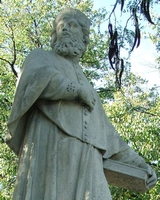
• Esztergomi Boldog Özséb
• Euzebiusz z Ostrzyhomia
• Eusebius von Gran
• Eusebius of Esztergom
Born to the wealthy Hungarian nobility. As a child he was noted as an excellent student and for his faith, preferring to spend his time in prayer and contemplation in his youth. After studying at the Esztergom Seminary, he was ordained a priest in the diocese of Esztergom, Hungary. Canon of the cathedral chapter of Strigonio (part of modern Estergom), he gave away all his pay, stipends and wealth to the poor. He is known to have written several books on canon law, but none have survived.
In 1246, Father Özséb retired to live as a prayerful hermit in the mountains of Pilis. His reputation for holiness and wisdom spread, and he attracted several would-be spiritual students. In 1250 he built a monastery and church for these people, and founded the Order of Saint Paul the First Hermit (Hermits of the Holy Cross) to give them a rule for their lives.
c.1200 in Esztergom, Komárom-Esztergom, Hungary
20 January 1270 in Szentkereszt (modern Pilisszentkereszt), Pest, Hungary of natural causes
• a popular devotion existed for centuries
• 16 November 2004 (approval of liturgical date by the Congregation for Divine Worship and the Discipline of the Sacraments)
• 8 February 2009 by Pope Benedict XVI (cultus confirmation)
Hermits of Saint Paul of Poland
https://catholicsaints.info/blessed-ozseb-of-esztergom/
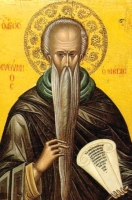
May have been an orphan as he was educated at the home of the Bishop Orteus of Melitine, Armenia (modern Malatya, Turkey). Saint Polyeuctus of Melitine was a friend of his family, and one of Euthymius' spiritual directors. Ordained c.396. Monk. Bishop's deputy for monasteries in the Melitine diocese.
In 406 he became a hermit for five years near the monastery of Pharan, about six miles from Jerusalem. He supported himself by making baskets, but gave most of his earnings to those even poorer than himself. Hermit near Jericho, living in a cave with a hermit named Theoctistus, and leaving his cell only on Saturday and Sunday, and then only to give spiritual direction. So many people gathered around the holy pair that they built a monastery; Theoctistus became abbot, and Euthymius withdrew to a cell near the Dead Sea.
He cured a young Arab boy, the son of Sheikh Asbepetus, by making the sign of the cross over him, and many Arab adults converted. Established a 15 cell hermitage at Khan-el-Ahmar c.426. Bishop, ordained by Juvenal, Patriarch of Jerusalem. Assisted at the Council of Ephesus in 431, but soon after returned to his solitude. Worked to bring Empress Eudoxia and her followers back to orthodox thinking, and away from the Monophysite heresy. Teacher of Saint Sabas the Great. Following his years in public, he withdrew again to his life of solitary prayer. His good example and wise counsel converted many. Foretold the date of his death.
378 at Melitine, Armenia (modern Malatya, Turkey)
20 January 473 of natural causes
https://catholicsaints.info/saint-euthymius-the-great/
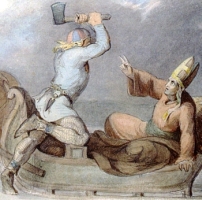 202
202• Henry of Finland
• Henry of Sweden
• Heikki, Henrik
18 June (translation of his relics)
While working in Rome, Italy, Henry was sent to evangelize Scandinavia, travelling with papal legate Cardinal Nicholas Breakspear, the future Pope Adrian IV. Bishop of Uppsala in 1148. Evangelized Sweden and Norway. Friend of King Saint Eric of Sweden, and accompanied him into battle with Finnish pirates in 1154. Eric offered friendship and Christianity to the Finns; they chose war, but lost to the Swedes. Henry then evangelized in Finland. Built a church at Nousis, Finland which became his headquarters. Martyred by a Finnish soldier named Lalli whom he had just excommunicated for murdering a Swedish soldier. Legend says that Lalli had a long life - continually tormented by mice as a penance for his attack.
English
• struck with an axe c.1156 at Nousis, Finland
• buried at Nousis
• miracles reported at his tomb
• relics translated to Torku on 18 June 1300
• relics stolen by Russian troops in 1720
1158 by Pope Adrian IV
• against storms
• Finland
• bishop being murdered at Mass with young King Saint Eric
• bishop being murdered by a man wielding an axe
• trampling on Lalli
https://catholicsaints.info/saint-henry-of-uppsala/

• Angelo Paoli
• Father of the Poor (nickname given him by parishioners in Rome)
The son of Angelo Paoli and Santa Morelli. As a young man he spent his spare time teaching catechism to poor children in Argigliano, Casola in Lunigiana, Italy. Calced Carmelite novice in Siena, Italy at age 18. Professed priest in the Carmelites of the Ancient Observance. Assigned to the Carmelites in Pisa, Italy, then Cupoli, Italy, then in Poggio Catino, Italy, and then Fivizzano, Italy. Noted for his charity to the poor and his personal devotion to the Passion. Erected wooden crosses on the hills around Fivizzano and then in the Coliseum in Rome, Italy in hopes of causing people to think about the Crucifixion. Assigned to the Convent of Saint Martin in Rome in 1687 where he served as novice master and ministered to the sick poor in the hospitals of Rome. Miracle worker.
1 September 1642 in Argigliano, Casola in Lunigiana, Massa Carrara, Italy
20 January 1720 in Rome, Italy of natural causes
• 18 April 2010 by Pope Benedict XVI
• recognition Mass scheduled to be celebrated at the Basilica of Saint John Lateran, Rome, Italy by Cardinal Agostino Vallini
https://catholicsaints.info/blessed-francesco-paoli/
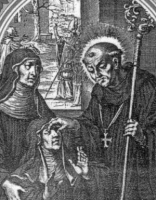
Vulstano, Wolstan, Wulfstan
Son of Athelstan and Wulfgeva, he was known as a pius youth. Studied at the monasteries of Evesham and Petersborough. When Wulstan was grown, but still a young man, his parents joined separate monasteries in Worcester, England. Priest who led his parish by good example. Monk in Worcester. Taught catechism to children, and served as church treasurer. Bishop of Worcester in 1062. Known for inspirational preaching, great humility, and asceticism. One of the first bishops in England to make pastoral visits to the parishes of his diocese. Influential in ending the sale of Irish prisoners as slaves in England.
c.1009 at Icentum, Warwickshire, England
1095 of natural causes
14 May 1203 by Pope Innocent III
https://catholicsaints.info/saint-wulstan-of-worcester/

Feichin, Vigean
Relative of Irish royalty, the son of Coelcharna and Lassair. Student of Saint Nathy at Sligo, Ireland. Priest. Hermit near Fore, Westmeath, Ireland. Founded Fobhar monastery in Westmeath and served as its first abbot; the house eventually grew to over 300 monks. Founded monasteries on High Island and Omey Island. Counselor and spiritual leader to the nobility of the day.
Connacht, Ireland
in 665 of plague in Ireland
https://catholicsaints.info/saint-fechin-of-fobhar/

• Stephanus Min Kuk-ka
• Seutepano Min Guek-ga
20 September as one of the Martyrs of Korea
Married layman in the apostolic vicariate of Korea. Widower. Catechist. Martyr.
1788 in Gyeonggi-do, South Korea
20 January 1840 in prison in Seoul, South Korea
6 May 1984 by Pope John Paul II
https://catholicsaints.info/saint-stephen-min-kuk-ka/
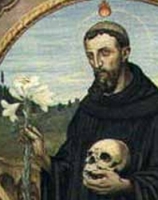
Benedict of Coltiboni
Vallumbrosan monk at a mountain monastery founded by his parents. In later life he became a hermit in a cell near the monastery.
at Coltiboni, Fiesole, Italy
1107 of natural causes
1907 by Pope Saint Pius X (cultus confirmed)
https://catholicsaints.info/blessed-benedict-ricasoli/
Priest in the archdiocese of Tarragona, Spain. Martyred in the Spanish Civil War.
5 December 1910 in L'Espluga Calba, Lleida, Spain
20 January 1939 in Santa Coloma de Queralt, Tarragona, Spain
• 13 October 2013 by Pope Francis
• beatification celebrated in Tarragona, Spain
https://catholicsaints.info/blessed-jeroni-fabregas-cami/
• 14 December (per Simeon Metaphrastes)
• 23 January (Bollandists)
Tortured and martyred by governor Arrian of Thebaid, Egypt in the persecutions of Diocletian for publicly proclaiming his faith.
Thebes, Egypt
drowned in the river Nile with a stone around his neck at Antinoe, Thebaid, Egypt
https://catholicsaints.info/saint-ascla-of-antinoe/
Desiderius
Bishop of Thérouanne, France. Founder of the Cistercian Sainte-Colombe Abbey in Blandecques, France. Late in life he retired and spent his last days in prayer in a Cistercian monastery.
1194 of natural causes
https://catholicsaints.info/blessed-didier-of-therouanne/
• Molagga of Fulachmhin
• Laicin, Molacca
Spiritual student of Saint David of Wales. Founded Fermoy monastery in Wales, and served as its first abbot.
Irish
655 of natural causes
https://catholicsaints.info/saint-molagga-of-fermoy/
Imperial Roman senator. During the persecutions of Diocletian he was exposed as a Christian. He was removed from office, arrested, tortured and martyred.
limbs hacked off and his body thrown into a pit to bleed to death
https://catholicsaints.info/saint-bassus-the-senator/
Imperial Roman senator. During the persecutions of Diocletian he was exposed as a Christian. He was removed from office, arrested, tortured and martyred.
limbs hacked off and his body hung up to bleed to death
https://catholicsaints.info/saint-eusebius-the-senator/
Imperial Roman senator. During the persecutions of Diocletian he was exposed as a Christian. He was removed from office, arrested, tortured and martyred.
limbs hacked off and his body hung up to bleed to death
https://catholicsaints.info/saint-eutyches-the-senator/
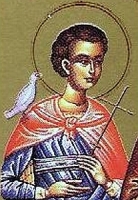
Neofita
Martyred at age 15.
Nicaea
https://catholicsaints.info/saint-neophytus-of-nicaea/
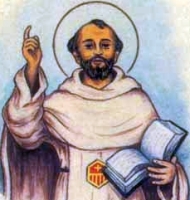
Commander of Mercedarians in Toulouse, France, making his solemn profession in 1333.
https://catholicsaints.info/blessed-bernardo-of-poncelli/
Imperial Roman senator. During the persecutions of Diocletian he was exposed as a Christian. He was removed from office, arrested, tortured and martyred.
https://catholicsaints.info/saint-basilides-the-senator/
Cistercian Benedictine monk. Abbot of the Cambron Abbey.
1232 of natural causes
https://catholicsaints.info/blessed-daniel-of-cambron/
Wulsi
Eleventh-century hermit in the west of England. Spiritual advisor to Saint Wolstan of Worcester.
https://catholicsaints.info/saint-wulfsi/
CatholicSaints.Info Portable Edition